There’s something appealing about a book that does things a little differently. Maybe it doesn’t break the rules, but bends them? Tries something new? Experiments with narrative? That’s absolutely my jam. I love when writers find new ways, new formats, and new styles to help elevate narration. Tricks of the trade that deliver information, or tell the reader something new, or force them to look at a story in a new way.
Inspired by a bevy of these tricks in Ruin of Kings, coming soon from Jenn Lyons, I thought I’d highlight a few other stories that utilize different devices to burst free from the housing of conventional narrative, and try to teach the reader something in the process.
Ruin of Kings by Jenn Lyons
Buy the Book
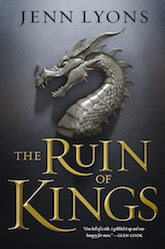

The Ruin of Kings
Ruin of Kings—the story of Kihrin, a young man coming to terms with his potential royal heritage, and the pivotal role he may have in either preserving an empire or destroying it—starts with an in-world author’s note, making this book an artifact that actually exists within the world of the novel. Readers soon realize it’s actually a transcript of dialogue between Kihrin and his captor, as he awaits trial. And there are footnotes from the original note taker, refuting information, or confirming rumors. Boy, are there footnotes! If you relish in-world texts informing dialogues, and revealing world building through characterization, then you are going to go bananas over this book! And while there are some other interesting narrative tricks at play in Ruin of Kings, we’ll save those for another article…
The Stormlight Archive by Brandon Sanderson
Buy the Book
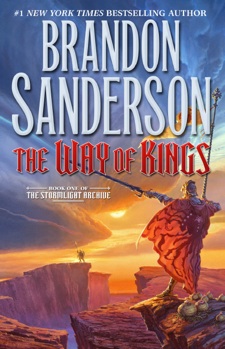

The Way of Kings
Sanderson is no stranger to utilizing epigraphs to teach readers about his world, and that device is most on display for his epic series, The Stormlight Archive. Set on the planet Roshar, a world wracked by frequent magical hurricane-like storms, this planet is home to several god-like beings, complicated cultures, deep histories, and much more. Sanderson explores those in his epigraphs before each chapter, where he details in-world letters between characters, quotes from historical figures, texts from history books, and more. He’ll also feature small short stories about events that are happening throughout the world, that may not directly affect the plot, but create a more immersive experience for readers. It helps the world remain grounded, while also expanding it in a way that feels and looks organic, but is actually a very clever mechanic to highlight world-building without info-dumping.
The Broken Earth Trilogy by N. K. Jemisin
Buy the Book
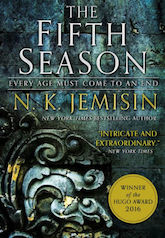

The Fifth Season
Jemisin also utilizes epigraphs to help her deepen her world, and has frequently used similar narrative devices to convey world-building centered on religion, history, character, magic, and more. In the Hugo Award winning The Fifth Season and its sequels, she uses epigraphs to get into the nitty-gritty of the various apocalypses that have rocked her planet. The world of the Broken Earth trilogy is inherently unstable, and the slightest tectonic shifts can bring about a Season, an in-world word for one of these devastating events. Society can be upturned in a moment’s notice, and so Jemisin uses space at the back of each chapter to expand on the various Seasons that have afflicted this planet, the stone-lore that has cropped up around them (steadfast rules to live by in times of a Season), as well as notes from history, both recent and ancient, that help teach us of the way this world works. Jemisin is brilliant in her applications of these bits of history and world-building, and as you read, you start to cobble together a better understanding of the world, and the truth that lies at the core of it all.
A Conspiracy of Truths by Alexandra Rowland
Buy the Book


A Conspiracy of Truths
Roland’s debut novel, coming out October of this year, follows the trials and tribulations of a crotchety old man named Chant—which represents a title, an occupation, and a name all in one. Chant has been wrongfully imprisoned in the tiny country of Nuryevet, and because he can’t keep his mouth shut, he’s then imprisoned again. What follows is a tale of political intrigue, revolution, and stories. Chant tells stories for many reasons: to illustrate a point, to help spread empathy, and more often than not, to help him get what he wants. Rowland does a brilliant job throughout the novel of using the various stories, languages, tales, myths, and songs that Chant has learned in his long life to get people on his side. Even further, she doesn’t just tell us about the stories, she actually tells us the stories through Chant. These moments in the novel, when a pivotal scene is punctuated by a story of swans or swords or the sea and those who wander it, elevate an already captivating story into something even more intricate and lovely.
The Descent of Monsters by JY Yang
Buy the Book
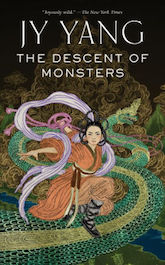

The Descent of Monsters
Continuing the tale that they began in their first two Tensorate novellas, Yang does something completely unexpected and fresh in their third novella, The Descent of Monsters: it’s told entirely in an epistolary format. The story of a Tensorate official working to uncover the tragedy that occurred at the Rewar Teng Institute of Experimental Methods, Investigator Chuwan begins to suspect foul play and must work to understand what happened, and uncover whether the mysterious Rider and Sanao Aheka of the Machinists are involved in the atrocity. Told in a series of letters to loved ones, official Tensorate reports and interviews, blacked-out government documents, and more, Yang does what they do best: tell a compelling story in an inventive format, continue to unfold the mysteries of their world, and create lively and complex characters in between the pages of letters. This novella is an incredible feat of style and structure, as well as story, and I can only hope Yang continues to push their work in new and unexpected directions as they have here.
Martin Cahill is a contributor to Tor.com, as well as Book Riot and Strange Horizons. He has fiction forthcoming at Beneath Ceaseless Skies and Fireside Fiction. You can follow his musings on Twitter @McflyCahill90.










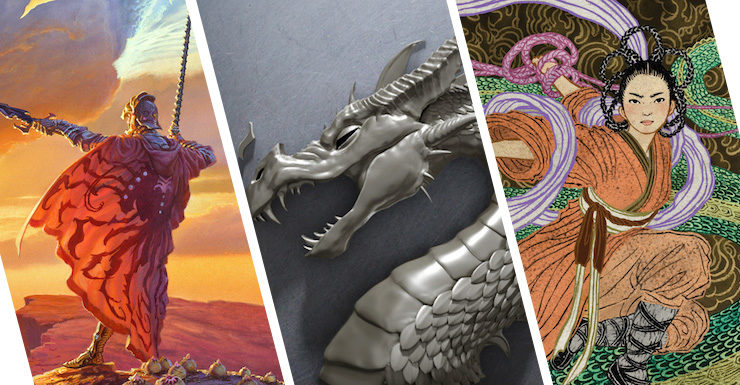
Epistolary format can be interesting. Steven Brust and Emma Bull used it in their novel Freedom & Necessity, and most people forget that Dracula was written that way.
As for the book you’re reading being part of the book you’re reading, Charles de Lint did something very like that with his novel The Little Country, when you realize the book in your hands is basically the macguffin everyone is seeking and/or reading in the novel. (This was written before eReaders. Not sure how that would work out if you’re reading it on an eReader these days. It’s harder to make the macguffin a eBook.)
Another experimental format which interested me was Roger Zelazny’s alternating chapters in his time travel novel, Roadmarks. One set of chapters (One) is a straight thru-line of story, the other set of chapters (Two) seems out of order until you realize they are in order according to the timeline of the main character but not the characters in those chapters.
When done well, such literary techniques can add dimension to the novel, and engage the reader in new ways.
All I have to say is … Brust!!! The fake writing style in the Paarfi romances. The elaborate dining sequences at Valabars that start every chapter of Dzur. The intersected discussions of Vlad casting a complicated spell in Taltos. The list of items for the tailor to fix that starts of each chapter in Teckla. The beat goes on.
Gael Baudino’s books of, “Water!” (O Greenest Branch, Branch and Crown, The Dove Looked In). In these novels that are a scathing look at religion, gender, politics, etc, she breaks the 4th wall, has the same scene told from two different characters on the same page (in columns), and Q&A sessions with the author. Also, there is apparently a formula for correct amount of rope for swinging in like a swashbuckler. They are some of my favorites, and I learn new things every time I read them.
The Kingkiller Chronicles are a wonderful example of breaking from standard narrative structure, to distance the past from the present as Kote tells the story of his life over three days. It creates two points upon which our interests are fixed: 1.) discovering the events that led to the tragic present in which a once-powerful-mage is now a lowly, seemingly defeated innkeeper telling the story of his past and 2.) the resolution of the tragic present into the unknown. It also showcases Kote’s storytelling ability, a trademark of his upbringing and a superb excuse for Rothfuss to really show off his own superior storytelling voice.
Since a preview for the sequel just got posted yesterday, it feels appropriate to mention The Tiger’s Daughter as a book that uses epistolary structure in an interesting way. A story being told by one protagonist to the other, for the most part, though both were present for most of it.
I’d also throw out Jay Kristoff’s Nevernight books as fantasy novels that use footnotes by the in-world author to add worldbuilding touches and occasional sarcasm.
Broadly speaking, I think this trend of making the frame part of the picture is interesting, considering the grand tradition it has. It used to be authors had to justify how the text found its way to a reader, for the most part–a novel couldn’t just be narrated by an invisible person over the shoulder. How would that work? How are they telling you this? Surely someone had to write it down? Who? When? Even Tolkien had his Red Book, after all.
It’s all fun, and in the present day with really active fandoms, it provides even more opportunity for readers to suggest “But what if X was actually Y?”, and other such things. Considering how many new(er) authors cut their teeth on fanfic, I think including that liminal space as part of the narrative makes a lot of sense.
Cosmonaut Keep (Ken MacLeod) has interlaced chapters, one set going forward in time and one set going backwards. It should be a silly trick, but it really works.
Norstrilia (Cordwainer Smith) starts with the end of the story, reported to be a Chinese narrative structure. First page is here: http://www.cordwainer-smith.com/norstrilia.htm
Stand on Zanzibar (John Brunner) has differerent kinds of chapters. This is borrowed from U.S.A by John Dos Passos.
I strongly doubt that any of these narrative techniques are unique to fantasy or SF.
@6 – “I strongly doubt that any of these narrative techniques are unique to fantasy or SF.”
Agreed. How about the “Murder of Roger Ackroyd” by Agatha Christie?
I’m reminded most of Roger Zelazny’s Lord of Light, where the seven achronologically ordered stories are hard to put into correct sequence, mostly because of the reincarnations.
@@@@@ 1:
most people forget that Dracula was written that way.
It’s even weirder than that: in addition to letters between various people, there are telegrams, newspaper clippings, excerpts from a ship’s log, and journal or diary entries by three different characters. In the case of Dr. Seward, the diary entries are actually transcriptions of wax-cylinder “phonograph” recordings.[*]
[*] Mina’s journal includes her discussion with Dr. Seward about his cylinder recordings, and her offer to transcribe them with her typewriter, making it a sort of in-character meta-commentary about the sources of the story.
Le Guin’s The Dispossessed is another book with spirals of story.
I’ll admit to being disappointed by this article, since it promised far more than it actually delivered. Part of this is the clickbaity title — “Unique Narrative Devices” — and part of this is the claim in the first paragraph that we’ll be discussing “new ways, new formats, and new styles”. Since I find this kind of thing interesting — I’m working my way through Italo Calvino’s If on a Winter’s Night a Traveler at the moment — I was intrigued: what are these “unique”, “new” narrative devices?
But: Epigraphs? Epistolary format? Stories within stories? There’s nothing remotely “new” or “unique” about any of that. These are devices that have been around for centuries.
Of course, the very next sentence refers to “tricks of the trade”, which by definition are not new, so the theme is garbled and contradictory pretty much right from the start.
“Some Examples of Traditional Alternatives to Standard Narration as Used in a Few Recent Fantasy Books” would have been a bit more honest a title, though admittedly less dramatic.
@9/PeterErwin You are completely right about the different text formats used in Dracula. I listened to the Audible’s audiobook with Tim Curry and a cast of actors and it’s amazing because each actor reports what the other has said. They don’t imitate the other actor’s voice, but they modulate the candence and tone. I strongly recommended, I wouldn’t have thought Dracula would be such an amazing choice for audiobook.
@9/PeterErwin You are completely right about the different text formats used in Dracula. I listened to the Audible’s audiobook with Tim Curry and a cast of actors and it’s amazing because each actor reports what the other has said. They don’t imitate the other actor’s voice, but they modulate the candence and tone. I strongly recommended, I wouldn’t have thought Dracula would be such an amazing choice for audiobook.
Cosmonaut Keep (Ken MacLeod) has interlaced chapters, one set going forward in time and one set going backwards. It should be a silly trick, but it really works.
As does the earlier Use of Weapons by Iain M. Banks. But this doesn’t count as plagiarism because it was MacLeod that suggested the format to Banks in the first place.
I really love the way American Gods toys with narrative–the interspersed-stories-that-aren’t-necessarily-plot-relevant method, along with epigraphs and some dipping behind the scenes of the Earth and, of course, the complications involved when one of your major characters is deeply involved in the power of knowledge and from a culture of story-spinning. I’ve also always loved the way The Left Hand of Darkness is structured, b/c it’s a sweeping epic and a deeply personal account and, essentially, an anthropological report pieced together from various translated documents, all at the same time. And it’s stated right off the bat by the main narrator/POV character/reporter that the structural choices are deliberate, b/c the way to get at the truth of his experiences is to tell it like a story. Le Guin in general plays with the concept of storytelling in fascinating ways. <3
A YA addition to this thread, but Code Name Verity also uses some of these tactics quite well. Without revealing too much, the narrator is writing down her account of being a spy and the people she met along the way (and “wasting time”/giving the author an excuse to be detailed while she does it) while being held captive by Nazis.
One thing I love about the Malazan series is the epigraphs- some of which are poems or saying that just seem to evoke a mood, but others of which are snippets of history or bard’s tales from the world. Many don’t seem to relate much to what you are currently reading, but there is the occasional epigraph that hits with a jolt of power and recognition. Connections twisted to the characters you’ve read books ago to the characters you are seeing now. It was/is a very cool experience, as Malazan BotF is the longest series I have read. That realization of the intricacies that had wormed their way into my brain was a unique literary experience for me.
@16 I was just about to write CODE NAME VERITY for this as well – not only is the writing style different, it is so cleverly crafted that the final reveal (other than ripping your soul into bits and stomping on the pieces) is so much of an OMG the writer is a GENIUS moment.
Ive never read anything like it as far as how the story was told – the story itself is riveting in its own way but the mechanics behind how it was crafted elevate it way beyond what it otherwise would have been.
A vastly under appreciated book
I’m sorry, but I find that first example somewhat amusing at the idea it’s novel. Aside from Dracula, more recently Sandy Mitchell since 2002 has been writing the Ciaphas Cain stories with the framing device that they’re his memoirs, published after his death, as assembled and edited by his friend and sometime lover Amberley Vail. Aside from his first-person account, she adds extracts from other writers to expand on what’s happening in the larger picture, and footnotes where she might be snarking on what’s going on, or adding her personal insight.
The way it’s written is why there’s no certainty among real readers if Cain is, as he says, a fraud who’s fooling people into thinking he’s some kind of heroic figure and depending on dumb luck to get out the situations he’s thrown in, or as Vail suggests, he really is the biggest damn hero in the Imperium but with a massive inferiority complex so he can’t give himself credit. The fact that there’s hints that Vail is creatively editing herself (especially in events she was involved in) just adds to the complexity, and it wouldn’t work if written another way.
“The House of Leaves” by Mark Z. Danielewski is a story within a story within a story about a film about a house. With footnotes of footnotes. Labyrinthine in content and structure. I believe his other novel “Only Revolutions” has half the book printed upside down and the reader is advised to read 8 pages from the front, turn the book over and then read 8 from the back. The 2 stories converge. I’ve not read it but it sounds intriguing. Or is it all just a gimmick?
@19:
Yeah, the whole “introductory note explaining that what follows is a document/transcript/recording from within the fictional world of the story” is a pretty old device.
Henry James’s famous ghost story “The Turn of the Screw” (1898) has an extended bit of introductory narrative that ends with one person reading aloud from a document written by another (now deceased) person, which is when the real story (the first-person narrative of the woman who wrote the document) begins.
Jan Potocki’s The Manuscript Found in Saragossa (1805-1815) is an even more complicated version of this, since it
(Summary taken from here.)
The entirety of Discworld utilizes footnotes to great effect. And if we’re gong for the story existing as a document within the wider world of the story there is always S. Morganstern’s classic tale of true love, adventure, and piracy, The Princess Bride.
I think the way David R. Bunch tells a story in his Moderan is pretty unique and it is amazing how much he can pack into very short stories.
https://www.nyrb.com/collections/classics/products/moderan
Re The Kingkiller Chronicles mentioned in comment #4 by @wjames1204: The narration also weaves in stories, myths, and even rhymes that both deepen the worldbuilding and, potentially, have some bearing on the various mysteries in Kvothe/Kote’s own life and story. The first two volumes are a tour de force of writing, and I hope we get volume three eventually.